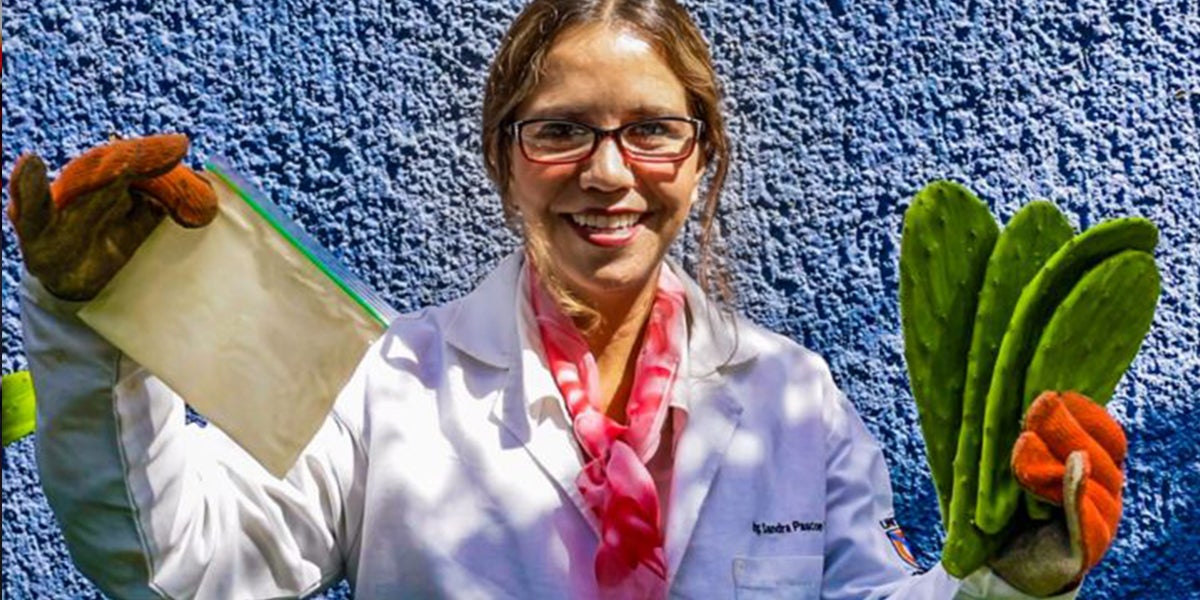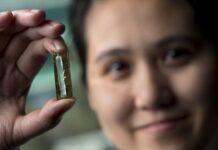In an attempt to develop a technique to cut down on single-use plastics clogging our landfills and polluting the oceans, Sandra Pascoe Ortiz, the University of the Valley of Atemajac engineer, has developed a way to turn nopal cactus juice into sustainable, environmentally sound, biodegradable plastic.
The cactus-based plastic takes just 30 days to biodegrade in soil and a couple of days to break down in water. On average, plastic bottles take at least 450 years to decompose and plastic bags can take up to 1,000 years. So, even if it makes its way into the ocean, it will either feed the fishes or dissolve instead of hurting or killing the marine life.
This alternative to plastic made from cactus leaves is biodegradable, and fish can eat it too.
Loading...
Hear more solutions to plastic waste: https://t.co/xtGU4tIdAE pic.twitter.com/QWJ7GyckOJ
— BBC World Service (@bbcworldservice) June 4, 2019
Pascoe wants her product to eventually replace fossil fuel-based plastic cutlery, bags, and other single-use plastic products. She told the BBC:
“It’s a non-toxic product. All the materials we use can be ingested both by humans or animals. And they wouldn’t cause any harm. My idea is to produce a plastic from natural ingredients and substitute it for some of the plastics we use today. We can obtain different colours, shapes, thicknesses. We can make plastics that are very smooth or very flexible and we can make others that are more rigid.”
The novel alternative to plastic is based on nopal or prickly pear cactus leaves, which has long been a national symbol of Mexico and a crucial staple of the Mexican diet. Pascoe used both the most common variety of edible nopal — the opuntia ficus-indica and the opuntia megacantha (which is known for its fruit called tuna) — to make her innovative material.
The plastic is made out of the sugars (monosaccharides and polysaccharides) of nopal juice. According to Pascoe, the sugars, pectin, and organic acids in the juice give it a viscous consistency. When the juice is blended with a mixture of glycerol, colorants, proteins, natural waxes and decanted to remove the fibre, the formula is dried out on a hot plate to produce solid and flexible sheets of plastic.

The process was registered with the Mexican Institute of Industrial Property in 2014, and the National Council of Science and Technology contributed funding to advance the project. For the time being, however, the production of the cactus-based plastic is limited to Pascoe’s lab, where she and her students spend time manufacturing the potentially revolutionary alternative.
Michelle Mendoza, who completed her industrial engineering recently but is still working with Pascoe, used the formula to make toys for her 3-year-old daughter. However, not everyone is convinced. Stephanie Buechler, a University of Arizona professor, says using biodegradable products is good, but using fewer products would be better:
“Using fewer materials will save land. It will save water. It will save the environment by not contaminating as much. And then, for the materials we really do need, we should think of ways like this to use less harmful inputs.”
Nevertheless, Pascoe says she would like to see her cactus-based plastic help reduce the impact of solid waste in Mexico and around the world. “Maybe,” she said, “I’m too much of an idealist.”






